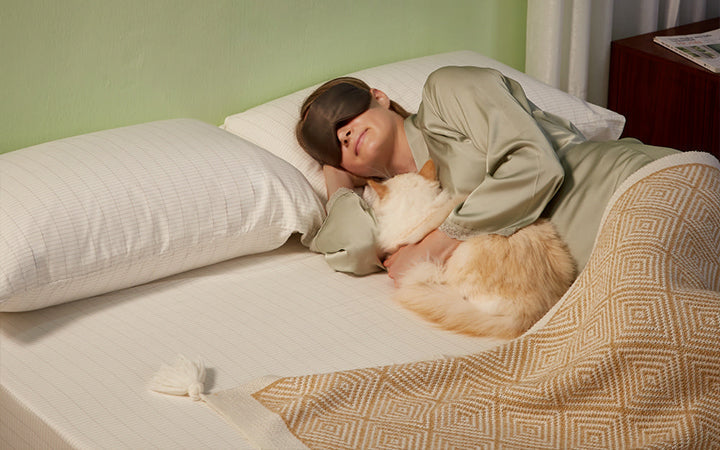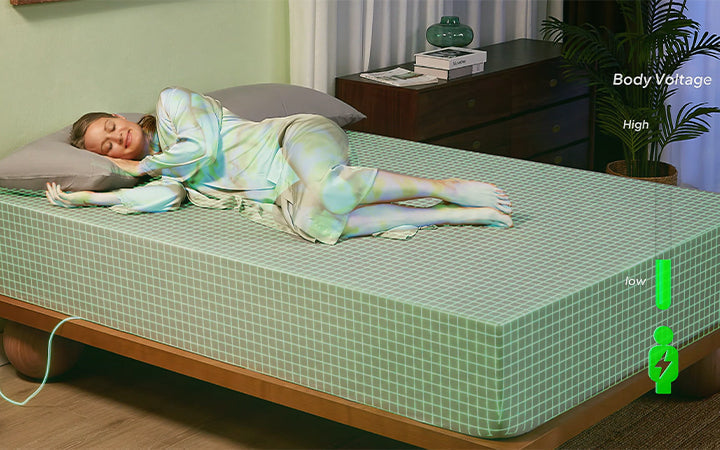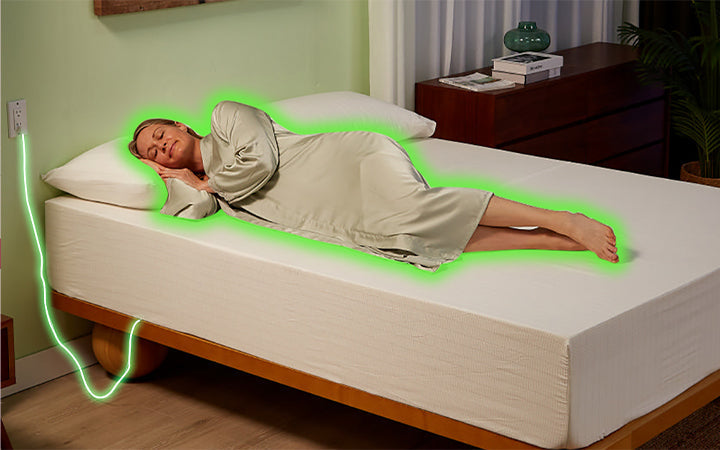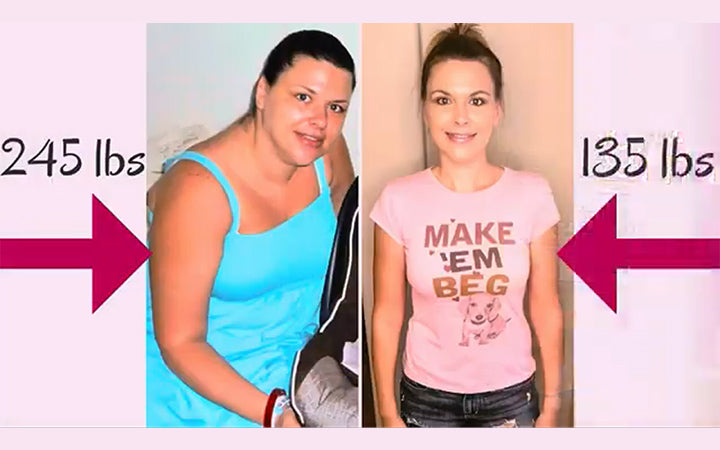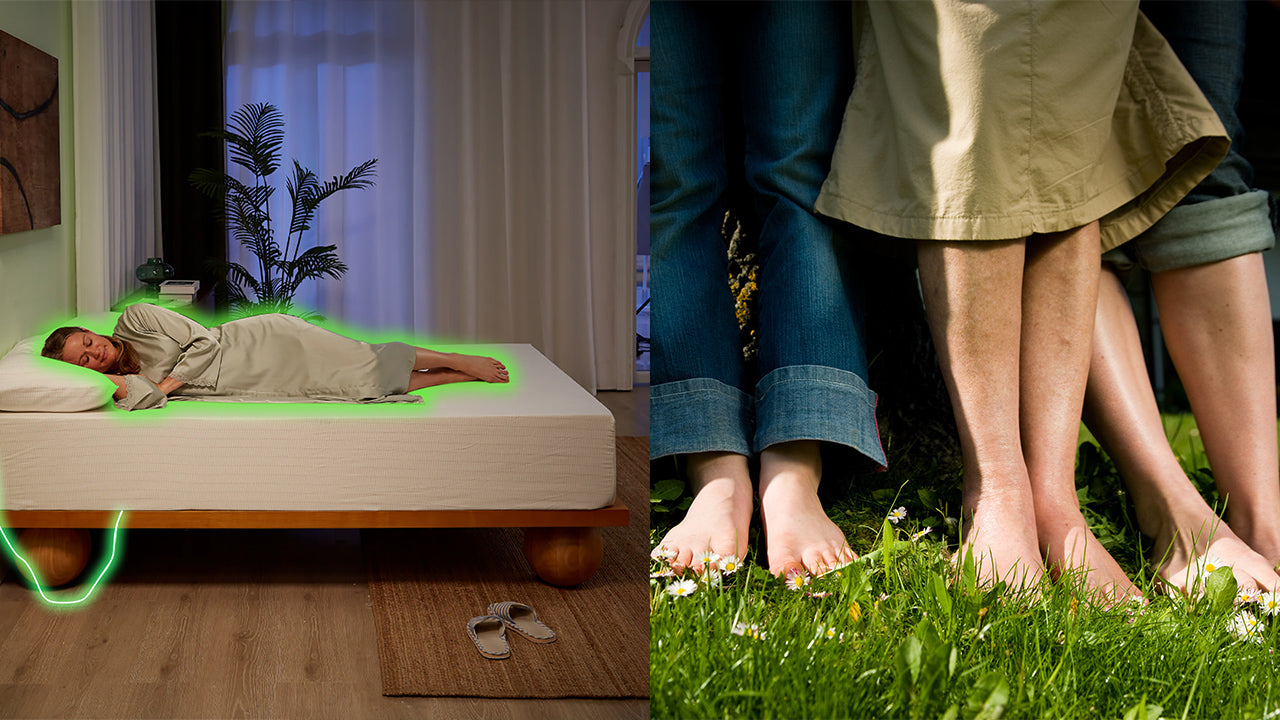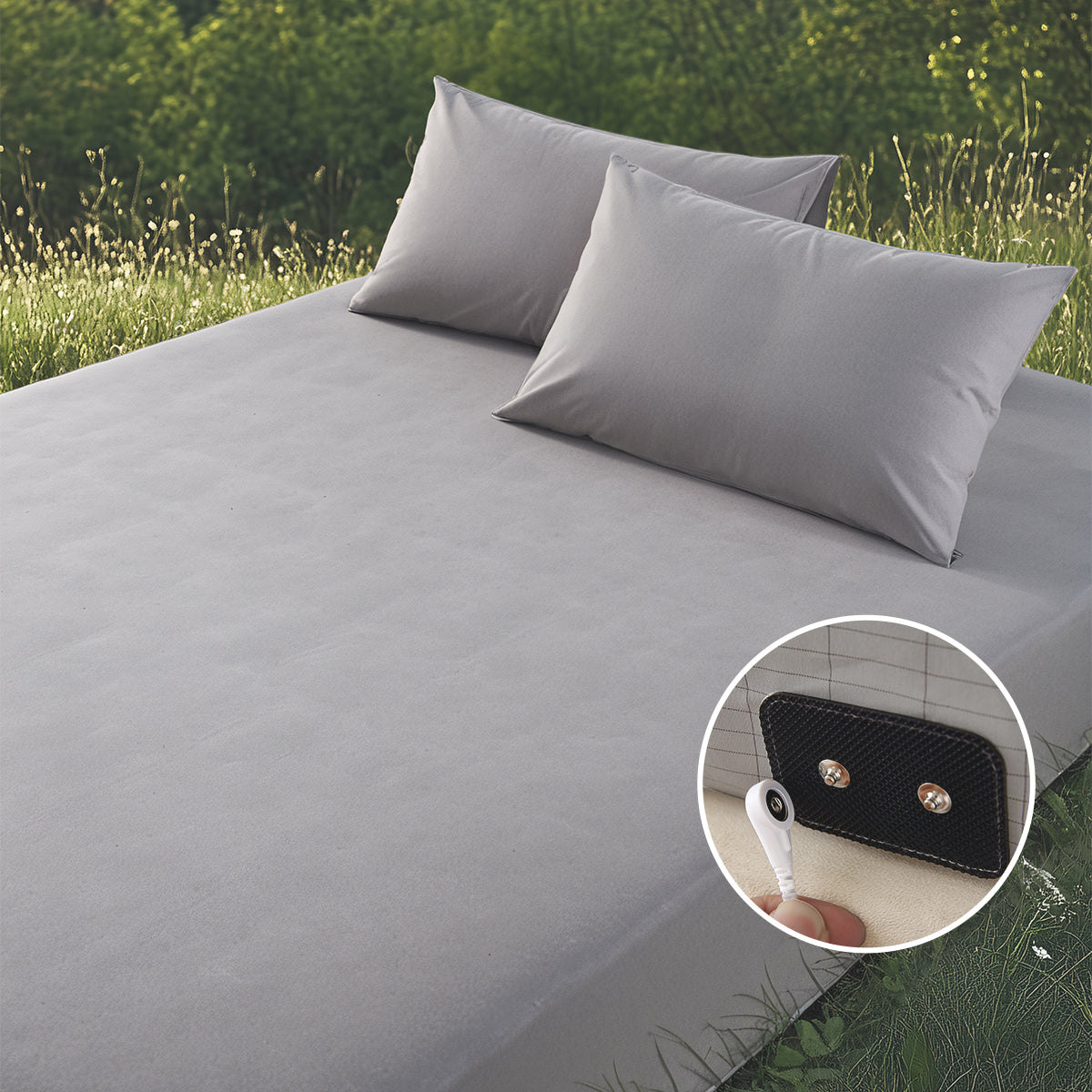Grounding Sheets for Shift Workers and Jet Lag: Realigning Your Circadian Rhythm Naturally
For people who work night shifts or move between time zones a lot, not being able to sleep at the same time as everyone else can be very tiring. Millions of people have problems like being tired all the time, having trouble focusing, and feeling like their body clock is all over the place. Grounding sheets are special sheets that connect you to the Earth's electrical field. They might help your body's normal sleep-wake cycle.

Why Shift Work and Jet Lag Mess Up Your Sleep
Your body runs on a 24-hour internal clock called the circadian rhythm. This clock controls when you feel sleepy or alert, when your body releases certain hormones, and how your metabolism works throughout the day. Light is the main signal that keeps this clock on track, but temperature and meal times also play a role.
When you work night shifts, you're forcing your body to stay awake when it wants to sleep. The same thing happens with jet lag—you fly to a new time zone, but your body still thinks it's on your home schedule. This isn't just about feeling tired. In the short term, you might have trouble thinking clearly, feel irritable, or have stomach problems. Over time, research shows that people with disrupted sleep schedules have higher risks of heart disease, diabetes, and even some cancers.

How Grounding Might Help Regulate Your Body's Clock
It is thought that grounding can change a number of body functions that are important for your sleep and internal clock.
Normalize Daily Cortisol Patterns
Cortisol is a hormone that controls when you sleep and wake up. It is linked to worry. Cortisol should be strongest in the morning (to help you wake up) and lowest at night (to help you sleep). Too much cortisol in the evening can make it hard to sleep if your body clock is off. Some studies show that getting grounded can help your cortisol level get back to a more normal daily rhythm. This control could lower your stress reaction and help you fall asleep faster, which would support a more stable cycle.
Improve Sleep Quality and Duration
Many people say that grounding items help them sleep better by helping them fall asleep faster, stay asleep longer, and feel more rested. This might be because of a number of things. In addition to possibly helping with cortisol, as we already said, grounding may also help reduce pain and inflammation or keep your sympathetic nervous system in balance. All of these things can help you sleep better and more consistently.
Reduce Inflammation and Pain that Disrupt Sleep
Having inflammation all the time can make it hard to sleep and make you feel sick. When your body is swollen, it can make it hard to sleep and make you feel bad. According to research, grounding may help reduce inflammation. Less pain and inflammation can help people who work shifts or move a lot sleep better, which is important for keeping your body clock healthy.
Balance the Nervous System for Better Rest
There are two main parts of your autonomic nervous system: the sympathetic nervous system (which makes you feel like you need to "fight or flight") and the parasympathetic nervous system (which makes you feel like you need to "rest and digest"). The "rest and digest" part should be more active, especially while you sleep, so you can rest and heal better. When you're under a lot of stress or your body clock is out of whack, the "fight or flight" reaction can get too active. Early research shows that grounding may help you do more "rest and digest" activities, which can help you relax and get the deep sleep your body needs to heal and keep a steady rhythm.

How to Use Grounding Sheets
If the ways grounding might support your internal rhythms sound helpful, here’s how to choose and use a sheet effectively.
Select a Quality Grounding Sheet
Choose sheets from companies that are clear about their materials and manufacturing. These sheets are typically cotton with fine silver or carbon threads woven in to conduct the Earth’s energy. The quality of these threads and the sheet’s construction affect its performance and durability. Before buying, verify that the sheet is conductive; some sellers provide testers, or you can use a multimeter.
For an excellent example, consider GroundingTime's grounding fitted sheets. They are expertly crafted from eco-friendly, sustainable bamboo fibers and a golden ratio blend of conductive silver fibers (90% bamboo fiber + 10% conductive silver fiber). This unique composition ensures a soft, breathable, and skin-friendly texture, all while providing effective grounding.
Set Up and Connect Your Grounding Sheet Properly
For the sheet to work, it needs a solid connection to the Earth.
Connect Through a Grounded Outlet
Most earth grounding sheets plug into the ground port of a standard three-prong electrical outlet. Your home's electrical system must be correctly grounded. If you're unsure, have a qualified electrician check your outlets. An ungrounded outlet will make the sheet ineffective.
Use an Outdoor Grounding Rod (If Necessary)
If a reliably grounded outlet isn't available, or if you prefer, connect the sheet to a grounding rod. This metal rod is inserted into the earth outside, with a wire running from it to your sheet.
Practice Safe Connection
Always follow the manufacturer’s setup instructions. Ensure cords are in good condition and connections are secure. Grounding products generally include safety features like built-in resistors, but correct setup remains important.
Get the Best Results from Your Sheet
To maximize any potential benefits:
Ensure Direct Skin Contact While Sleeping
The conductive threads in the sheet need to touch your bare skin. Pajamas made of natural fibers like cotton are usually fine, as some skin moisture can help maintain the connection, but direct contact is ideal.
Use the Sheet Throughout the Night
High quality grounding sheets are designed for use while you sleep, providing a continuous connection, typically for 6-8 hours.
Maintain Consistent Nightly Use
The effects of grounding may build over time. Regular, nightly use is generally better than using it only occasionally.
Maintain Your Grounding Sheet
Refer to the manufacturer's washing guidelines. Usually, you can machine wash them in warm water with a mild liquid detergent. Avoid bleach, fabric softeners, and detergents with whiteners or oils, as these can damage the conductive threads or leave an insulating film. Tumble dry on a low heat setting or line dry. Avoid high heat. Proper cleaning ensures your grounding sheet maintains its conductivity and extends its lifespan for optimal grounding benefits.
Inspect Connections Periodically
Regularly check the cord and connection points to ensure they are secure and undamaged. If you have concerns about its performance over time, you can re-test the sheet’s conductivity.

Grounding Sheets: A Complementary Approach, Not a Solo Fix
If you only use a grounding sheet and don't look at other things that can change your internal clock, you might not get the results you want. In the same way that eating better is good, but it's even better when you also exercise and get enough sleep. Along with grounding, these are some other well-known methods:
1. Light Management:
Once you wake up, try to get some bright light, like sunshine. This is a strong sign that your internal clock needs to be reset. A bright light treatment box can help you start your "day" (even if it's evening if you work shifts) if you do.
For at least an hour or two before bed, stay away from blue light sources like computers, phones, and tablets. Melatonin is a hormone that helps you sleep. This kind of light can mess with it.
2. Good Sleep Habits (Sleep Hygiene):
Try to go to bed and wake up at the same time every day if you can. This helps keep your sleep-wake routine strong. This can be hard for people who work shifts, but try to be consistent as much as you can.
Make sure your bedroom is cool, dark, and quiet. Curtains that block out light, earplugs, or a white noise machine can all help. Take a warm bath, read a real book (not an ebook), do some light stretching, or listen to some quiet music before going to bed.
3. Diet and Meal Times:
Stay away from big meals, too much caffeine (especially in the afternoon and evening), and drinking right before bed. These can make it hard to sleep.
According to some studies, the time of day you eat can also change your circadian rhythms. By eating at regular times, you might feel better.
4. Exercise:
Doing a lot of physical exercise every day can help you sleep. Some people might stay awake if they work out very hard right before bed, though. Most of the time, it's best to do light activities like yoga in the evening or moderate exercise in the morning.
5. Stress Management:
Being stressed for a long time can mess up your circadian rhythms. To deal with stress, try things like awareness, meditation, deep breathing, or spending time in nature.
6. Melatonin Supplements (with guidance):
A hormone called melatonin is made by your body. Some supplements can help with jet lag or certain shift work plans, but you should be careful when taking them and talk to a doctor about the right time and amount.
4 Things to Keep in Mind Before Trying Grounding
With the practical steps of using and caring for a grounding sheet covered, a few final points are worth considering before you begin.
Individual Results Can Vary
Different people react differently to being grounded. Some people may quickly notice changes in how well they sleep or how much energy they have. Some people might only notice small changes, or maybe none at all. Your general health, the way you live your life, and the type of circadian disruption you have can all play a part.
Confirming Electrical Safety
As the setup book says, a very important safety step is to make sure that your electrical outlet is properly grounded. Reliable grounding goods also come with safety features like resistors that are built in to give you extra peace of mind. Taking these safety measures seriously helps make use safer.
Potential for Mild Initial Sensations
Some people have mild, short-term effects like being a little tired or getting a headache when they first start grounding. If you keep using it, these typically get less noticeable and go away in a few days. If these feelings bother you, you could try grounding for shorter amounts of time at first.
Realistic Expectations for Benefits
Keep your goals in check. Supporting the body's natural processes through grounding may help some people sleep better and feel better, but it's not sold as a quick fix or a surefire way to help everyone. As we talked about earlier when we talked about a holistic approach, grounding is most likely to work best when used regularly along with other healthy habits, and waiting can be helpful.
Consider Grounding Sheets for Your Rhythms!
Grounding is a natural way to help your body's internal clock, which can be helpful if you work shifts or are traveling. The autonomic nerve system may be balanced, cortisol levels may return to normal, and sleep may improve. Along with other healthy habits, giving it a try could be a good way to improve your health and find a better pace. Even though more research needs to be done in this area, it's an interesting choice for people who want natural help.
Not sure where to start? → Try this grounding guide for beginners.
